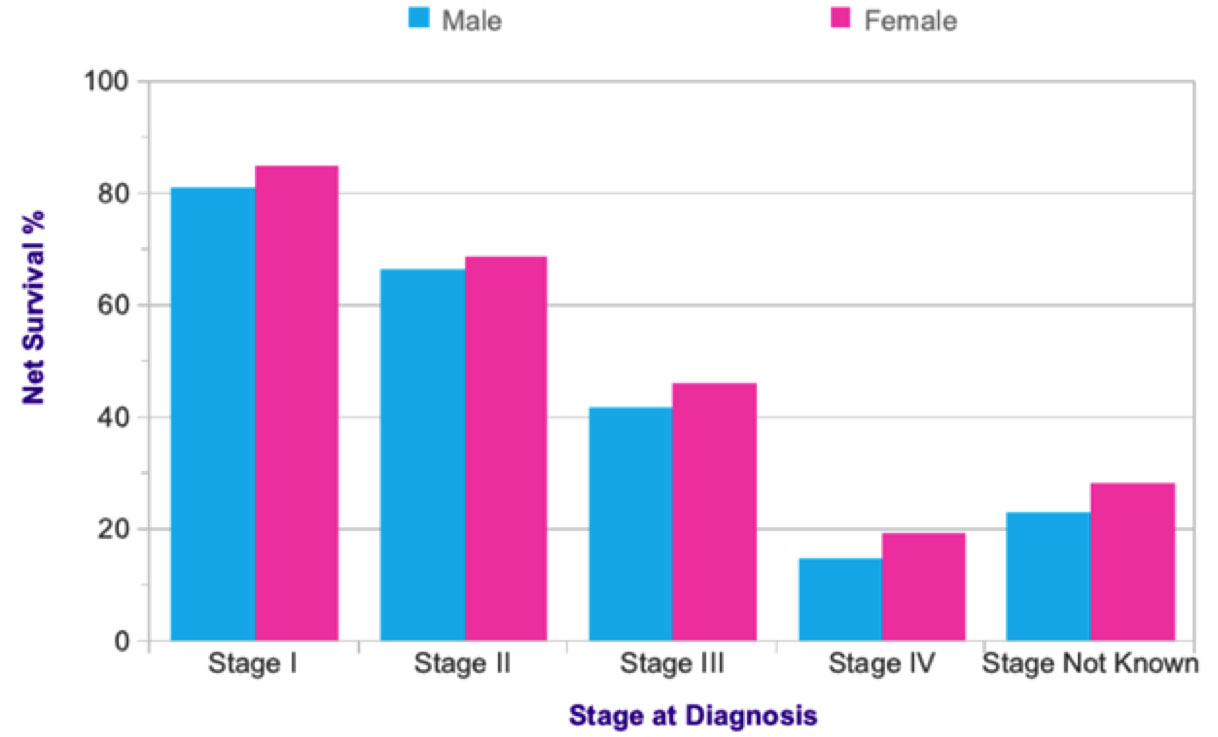We think liquid biopsy technologies have the potential to have a meaningful impact on cancer outcomes by enabling earlier detection and earlier detection of recurrence. Liquid biopsy is the term used for identification and characterization of a tumor from blood-based analysis. Whereas traditional biopsies use direct tumor samples, liquid biopsies leverage technologies that are able to distinguish tumor nucleic acids and other markers present from a simple blood draw. These technologies exist today and are in the early stages of commercialization.
Better outcomes are associated with earlier detection. The chart below shows one-year survival rates for patients diagnosed with lung cancer (Exhibit 1). In these data, “Stage I” is the least advanced, and “Stage IV” is most advanced.
Exhibit 1: One-Year Net Survival (%) by Stage, Adults Aged 15-99, England

Source: Cancer Research UK, https://www.cancerresearchuk.org/sites/default/files/cstream-node/surv_1yr_lung_1.pdf, Accessed October 2019
In order to detect cancer, one needs to look for it. Technologies like mammography and pap smear have transformed mortality rates for breast cancer and cervical cancer, respectively. According to the National Institutes of Health, broad adoption of pap smear screening resulted in mortality rates of cervical cancer dropping by greater than 60% (https://report.nih.gov/nihfactsheets/viewfactsheet.aspx?csid=76).
Many cancers, like lung and liver, do not have good screening methodologies to ensure early detection. Liquid biopsy has the potential to change this over the next decades. The technologies are already good enough, but in most cases, data still needs to be generated to define how liquid biopsy should be deployed. We expect the state of the art to evolve meaningfully in the coming years, and ultimately, we think liquid biopsy could have a bigger impact on survival rates than any prior technology.
This information is not intended to provide investment advice. Nothing herein should be construed as a solicitation, recommendation or an offer to buy, sell or hold any securities, market sectors, other investments or to adopt any investment strategy or strategies. You should assess your own investment needs based on your individual financial circumstances and investment objectives. This material is not intended to be relied upon as a forecast or research. The opinions expressed are those of Driehaus Capital Management LLC (“Driehaus”) as of October 2019 and are subject to change at any time due to changes in market or economic conditions. The information has not been updated since October 2019 and may not reflect recent market activity. The information and opinions contained in this material are derived from proprietary and non-proprietary sources deemed by Driehaus to be reliable and are not necessarily all inclusive. Driehaus does not guarantee the accuracy or completeness of this information. There is no guarantee that any forecasts made will come to pass. Reliance upon information in this material is at the sole discretion of the reader.
Other Commentaries
Data Center
By Ben Olien, CFA
Driehaus Micro Cap Growth Strategy March 2024 Commentary with Attribution
By US Growth Equities Team